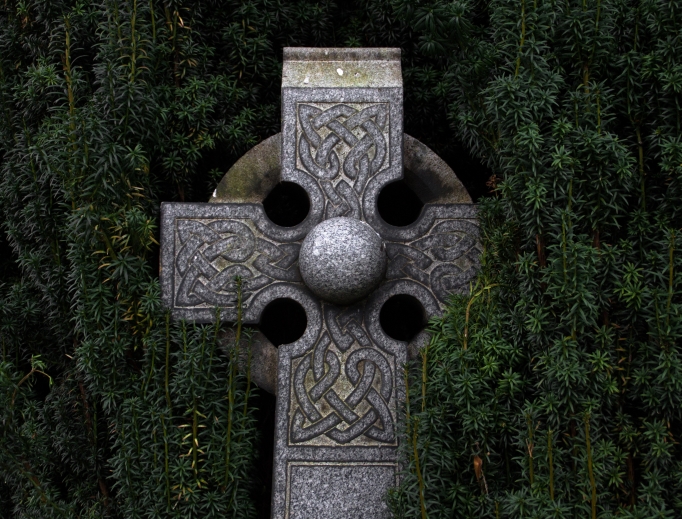English Catholicism Is Roman Catholicism

 (NOTE: The article below by Father Dwight Longenecker, a priest of the Diocese of Charleston, South Carolina, shows there’s no evidence that the Anglican church was founded on an ancient apostolic church that existed in Britain for 600 years before the arrival of St. Augustine. It is really an interesting and historical anecdote. Isaac Gomes, Associate Editor, Church Citizens' Voice).
(NOTE: The article below by Father Dwight Longenecker, a priest of the Diocese of Charleston, South Carolina, shows there’s no evidence that the Anglican church was founded on an ancient apostolic church that existed in Britain for 600 years before the arrival of St. Augustine. It is really an interesting and historical anecdote. Isaac Gomes, Associate Editor, Church Citizens' Voice).
NATIONAL CATHOLIC REGISTER
8th August 2017
Since King Henry VIII broke with the Catholic Church to found the Church of England, you would imagine that Anglicans would never claim to be Catholic. But they do.
When I lived in England I often heard members of the Church of England say, “We’re Catholic too; we’re just not Roman Catholic.”

Father Dwight Longenecker is a priest of the Diocese of Charleston, South Carolina. He writes a blog called Standing on My Head.
The theory is that the English Church was always Catholic, but in the 16th century it was “reformed”: The popular idea is that jolly old King Henry VIII saw that the monasteries were full of fat old monks and he went through and tidied things up a bit. The Church had become fat, old and corrupt, and Henry and his children, Edward and then Elizabeth, straightened things out, streamlined a few things and got everything shipshape.
This is not only a complete whitewash of the depredations, iconoclasm and wholesale destruction of the Catholic Church, but it is also a misreading of English Catholic history. Along with this view of the English Reformation is a strange idea that the Church in England was, from the beginning, separate from Rome and that only in the Middle Ages onward was it under Rome’s thumb.
Coptic and Celtic or British and Roman?
A good number of Anglicans have bought into an alternative history, not only believing the old tale that Joseph of Arimathea brought Christianity to the British Isles, but there was also an ancient link between the Celtic people and the Copts of Egypt. They find scraps of evidence — like some ancient carvings in Ireland — which seem similar to Church art in Egypt.
The idea that the Church in England grew out of links that were independent of Roman authority suits Anglicans because they like to imagine that there are three ancient apostolic churches, Rome, the Orthodox and themselves. The Celtic-Coptic theory enables them to sustain this myth. It also helps them to defend their continued independence from Roman authority. The Anglican argument goes like this: “We are descendants of the first British Christians. They existed happily for 600 years independent of Rome; and we are simply part of that same stream of ancient apostolic Christianity.”
Unfortunately, the idea that Celtic Christianity sprang up on its own, independent of Rome, just doesn’t fit the facts.
On the other hand, we do have clear evidence that Christianity in Britain was, from the first, Roman Christianity. To pin it down we have to look at what happened in the Roman Empire the first few decades after the death of Christ.
Ten years after Jesus’ crucifixion, the Emperor Claudius successfully invaded Britain. Over the next 350 years, the Romans established a thriving colony in virtually the whole of Britain. With the Roman armies came Roman religions, and one of the religions was the new religion of Christianity. The first Christians in Britain, therefore, were Roman Christians.
Christian inscriptions found on crude Roman pottery in Britain dating from this period suggest that the first Christians were poor people, probably Roman soldiers or slaves. The documentary evidence comes from Tertullian and Origen, both writing in the second century. That they knew of the Church in Britain shows that it was sufficiently well-founded, large enough and connected enough with the rest of the Church that Catholics in North Africa knew of it.
By the third and fourth century the evidence for Roman Christianity in Britain is overwhelming. The first British martyr, St. Alban, was killed for his faith in 304. There must have been a well-established hierarchy because it is recorded that the bishops of London, York and Lincoln attended the Council of Arles in 314. The British bishops were also present at the Council of Rimini in 359.
The archaeological evidence for Roman Christianity at this time period is found everywhere in Britain. There are Chi-Rho monograms scratched in third-century pottery, a ceramic plague with the paternoster inscribed on it, mosaic floors with Christian symbols, and even an image of Christ.
There are remains of Christian chapels, Romano-British Christian burial sites and a fantastic discovery in 1975 of a fourth-century silver chalice with Christian markings showing that Mass was not only celebrated in Roman Britain, but celebrated in sumptuous style.
During the first 350 years, the British Christians were Roman. We know they converted some of the locals, but what happened after the Romans withdrew from Britain around the year 410? Did the British Church suddenly declare independence of Roman authority? Is this when the independent Celtic Church was established?
On the contrary; after the departure of the Roman legions in the early 400s, the British Christians relied even more on their Roman Church contacts. This is the time of the Pelagian heresy, and in 429, a British deacon appealed to the Pope for help to combat it. Pope Celestine commissioned St. Germain of Auxerre to go on a mission to Britain. St. Germain was accompanied by St. Patrick. He stayed there and established seminaries, and revisited Britain in 447 to consolidate his work. This is clearly an example, not only of Rome asserting authority in Britain, but also of the British Church asking for that authority.
The Mission of Patrick
Around 450, the Saxons started to invade a weakened Britain, and for the next 150 years (until the year 597), the pagan Saxons persecuted the Christian Britons. The persecuted Christian minority fled west to Cornwall, Wales and Ireland, and south to Brittany in France. It was only during this 150 years that the Celtic Church existed in isolation from the authority structures of Rome.
Even then, the missionary endeavors to Ireland continued from Roman origins and not from Coptic Egypt.
St. Patrick, the great apostle of Ireland, was born in Scotland of noble Roman parents. His mother was a relative of the great St. Martin of Tours. His origin and training didn’t come out of nowhere. It was all from the Catholic Church — always loyal to Rome. Patrick’s mission was actually commissioned by Pope Celestine. When he went to Ireland in 433, he didn’t discover an “ancient Celtic Church,” but bloodthirsty Druids who needed converting.
It is true that the Celtic Church aided by Patrick developed in relative isolation from Rome for about 150 years, but in Britain it was soon to be reconciled. In 597, St. Augustine of Canterbury arrived in southeast England; he was sent by Pope St. Gregory the Great. Eventually, his missionaries encountered missionaries of the Irish Church who had been evangelizing England from the north and west.
When they met there were some differences of discipline. At the Synod of Whitby in 664, the matter was debated, and the Celtic contingent bowed to the authority of St. Peter in the person of the pope after their king said, “If he is Peter, I must agree with him.”
Was the Anglican church founded on some pure, serene and ancient apostolic church that existed in Britain for 600 years before the arrival of St. Augustine sent by Pope Gregory? There’s no evidence for it.
Instead, the British Church was started by Romans, converted the locals, and remained linked to Rome even after the legions departed from Britain. After that, the missionary efforts to the British Isles were of Roman origin.
Yes, for about 150 years the Catholic Church in Britain, like the Catholic Church in China today, existed under persecution and in isolation from the seat of authority. But as soon as they had the opportunity to submit once again to Peter, the Celtic Church did so.
















